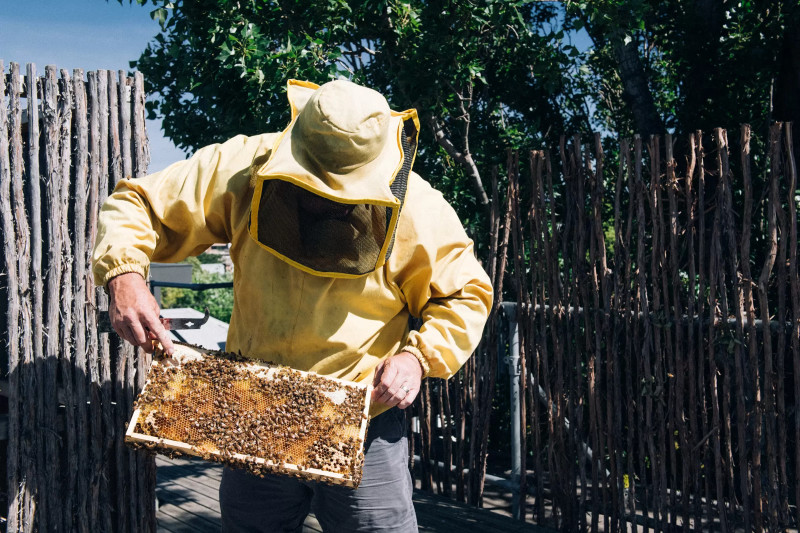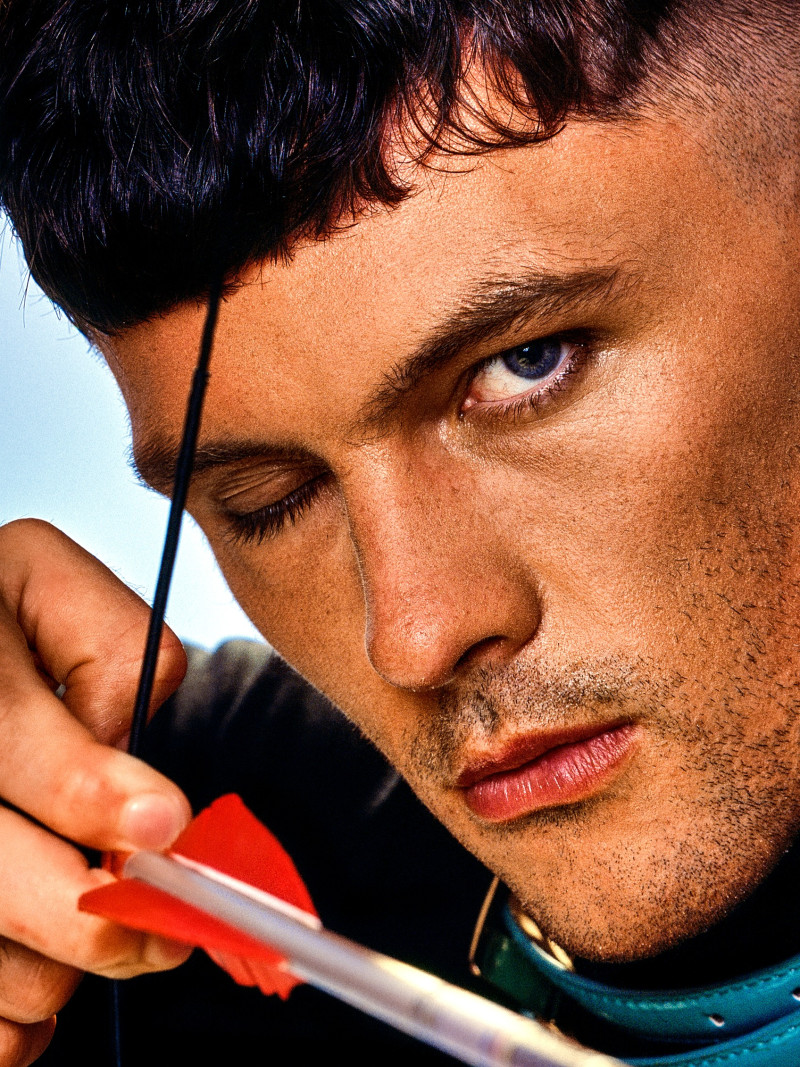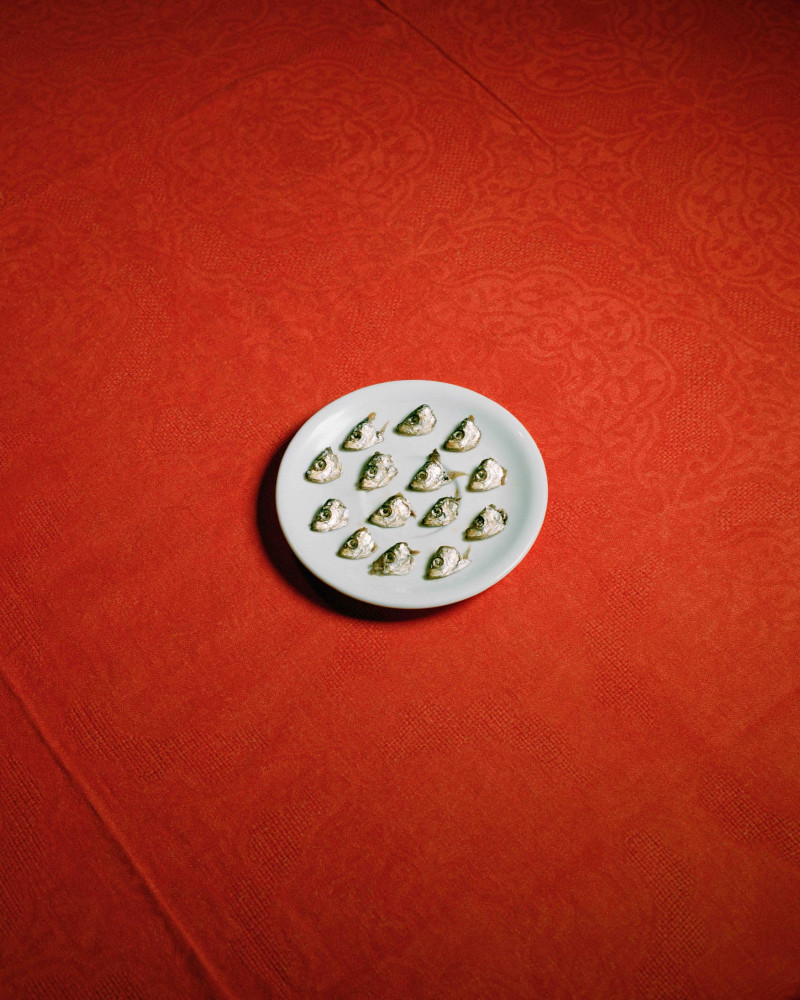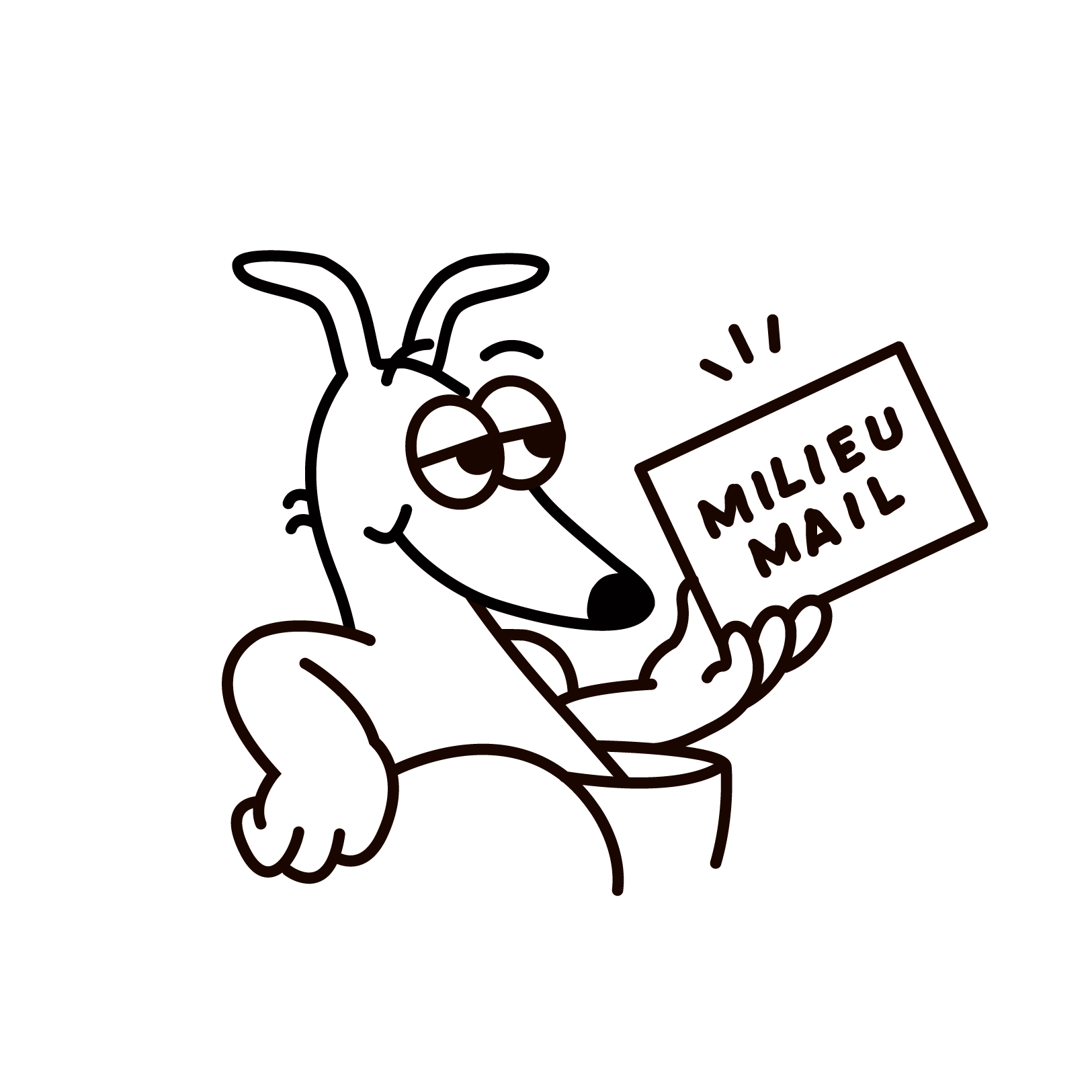Breesey Bees with Honey Fingers
Essay by Isabel Johnson (Ed Supreme)
Photography by Kate Ballis
What do avocadoes, almond milk and watermelon juice all have in common? Aside from being breakfast ingredient royalty, without the activity of our wee mates Apis mellifera, they’d actually be kaput. The Western honey bee might be best known for their delectable sweet syrup, but they’re also the best thing to happen to healthy ecosystems and agricultural production since way before sliced sourdough.

After their introduction by settlers in the 1800s, honey bees rapidly spread throughout Australia to become both domestic and wild. Joining the 1500 species of native Australian bees, they pollinate so many flowers that it’s said they’re responsible for the production of one in every three bites of food that we take. So, if they’re still so abundant and prolific, why does it seem lately that there’s a real urgency around the plight of bees?
Over the past decade, there has been a dramatic decline in bee populations around the world. Sudden losses of whole colonies raised the alarm on a phenomenon called colony collapse disorder. Though no one clear explanation for it exists, we know it’s due to a confluence of factors: pesticides, disease, inadequate food sources, lack of genetic diversity, and more. Collapse is incredibly costly, with natural bee pollination of crops valued in the billions every year – not to mention the sad cost of having failed to protect a remarkable creature whose ancestors go back to the dinosaurs.
But here’s some good news. Australia is enjoying the last golden age of beekeeping, with the healthiest bees in the world producing wonderful honey. Crisis is yet to reach our shores, although the risk factors certainly are present. The varroa mite – a bloodsucking parasite that devastates bee colonies – mounts one of the greatest challenges. We’re the last country in the world to be free of its effects, but varroa is routinely discovered and destroyed by quarantine inspectors, and has lately been spotted in Queensland. It’s a ‘not if, when’ problem, so it’s vitally important that we’re not complacent, but appreciative of what we have and proactively nurture it.

In addition to growing and buying local and organic produce, one of the most effective things we can do is understand and engage with urban beekeeping. As an industry, it’s one of the oldest there is; archaeological excavations have revealed apiaries, or beehive colonies, constructed from clay and straw dating to the ninth or tenth century B.C. As a hobby it’s nothing new, but beekeeping within the confines of cities has been on a steady rise, worldwide. From New York to Glasgow, urban colonies exist in backyards, on balconies and on rooftops of apartments, restaurants, hotels and even airports.
The benefits of urban beekeeping are myriad and interconnected. By breeding more colonies of healthy, happy bees, we can contribute to their survival and to sustainable biodiversity, learn new skills, and be rewarded with delicious honey in the process! And happy they really are. It may seem counterintuitive, but city dwelling bees are actually better-off than their country friends. Why? Because a greater variety of food is available year-round. City plants are artificially watered for more consistent yields and aren’t under siege by agricultural chemicals. The thousands of species of native and exotic flora in Melbourne provide bees with a huge source of nectar and pollen.
Urban bees create ‘poly-floral’ honey that tells of a million flowers distilled. Each hive’s honey will have different flavour profile depending on what’s growing in the neighbourhood, as well as reflecting the change in seasons. Brunswick’s autumn honey, for example, might have notes of summer herbs, while spring honey from the same hive could be redolent of winter-flowering eucalypts. Urban bees’ perennial activity results in less winter deaths and in turn pollinates more flowers, perpetuating a circle of ecological production worthy of celebration.
The beauty of urban beekeeping is that it reveals the conceptual distinction between nature and built environments is a fallacy. The wilderness isn’t out there somewhere, it’s all around us. The dragonfly zig-zagging around is trying to hunt a bee snack, as is the wattle bird up there in the melaleuca. Peel back the paperback and you’ll find spiders nibbling on other invertebrates. Paused in the grass is that little gecko from your bedroom wall, ready to nab a cricket. When you open your bees’ hive and pull out a frame, glistening with viscous liquid gold and sculptured honeycomb, you’re stepping into that food-web too, where you can always indulge in the satisfying pleasure of harvesting your own edibles.

This essay was informed by conversation with Nic Dowse from Honey Fingers, who generously shared his insight and philosophies on urban beekeeping. Nic will be responsible for the set-up and maintenance of hives on the rooftop at Breese Street, Brunswick (Completed 2020).



